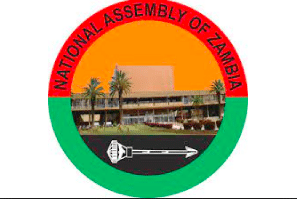Authored By: John Moono

Democracy comes from a Greek words ‘demos’ meaning People and ‘Kratos’ meaning rule. Therefore, democracy is the rule by the people. Democracy provides for the traditional arms of government to operate an independent basis called the Separation of Powers.
The axis of governance in any type of governance system tends to have the three arms of government. The three arms of government have traditionally been the Executive,the Legislature and the Judiciary. In modern times and due to increased importance of the Media, it has been called the fourth arm of government.
However, the constitution in most countries Zambia inclusive provides for the three arms of government in the Supreme Law of the Land. The Zambian Constitution provides a dynamic system of operation for the three arms of government.
According to Article 105 of the Constitution Amendment Act No 2 of 2016 stipulates:
The President-Elect shall assume office after being sworn in the Chief Justice or, in the absence of the Chief Justice, the Deputy Chief Justice.
The Head of the Executive is given the instruments of power by the head or deputy of another arm of government which is the Judiciary.
Once he gets the instruments of power the Head of the Executive is given constitutional mandate to appoint the Head of the Judiciary. According to Article 140 of the Constitution Amendment Act No 2 of 2016 stipulates:
The President shall, on the recommendation of the Judicial Service Commission and subject to ratification by the National Assembly, appoint the-
- A) Chief Justice
- B) Deputy Chief Justice
- C) President of the Constitutional Court
- D) Deputy President of the Constitutional Court
- E) Other Judges
The roles are somehow reversed when the President assumes offices and has the constitutional mandate to appoint the Head of the Judiciary and the is to be ratified by the other arm of government which is the National Assembly ( Legislature)
Furthermore, According to 82 of the Constitution Amendment Act No 2 of 2016 stipulates
The Members of Parliament shall elect, by secret ballot, a Speaker of the National Assembly from the list of names of persons who are qualified to be elected as Members of Parliament l, but are not Members of Parliament, submitted to the National Assembly by-
- A) President
- B) Political parties holding seats in the National Assembly.
The President again is constitutionally mandated to appoint any person qualified to be a Member of Parliament as Speaker but is not and that appointment shall be ratified by the elected Members of Parliament through a secret ballot in the National Assembly. The Speaker upon assuming the office automatically becomes the Head of the Legislature.
The Speaker would go on to be an important figure is the dispensation of democratic tenets in a country. According to Article 106 (4) (b) of the Constitution Amendment Act No 2 of 2016 stipulates
The office of President becomes vacant if the President- resigns by notice in writing to the Speaker of the National Assembly.
Furthermore, Article 105(9) of the Constitution Amendment Act No 2 of 2016 stipulates that the Speaker shall, perform the executive functions assumed in accordance with the clause 105 (8) except the power to make an appointment or dissolve the National Assembly. This is when the President or Vice President to hold the office of President dies, resigns or is for another reason unable to assume the office of President as stipulated in clause (8).
This dynamic system of governance though difficult to understand at times actually happens almost in all types of governance systems employed by different countries. This axis of governance helps office bearers to avoid the breach of the constitution.




